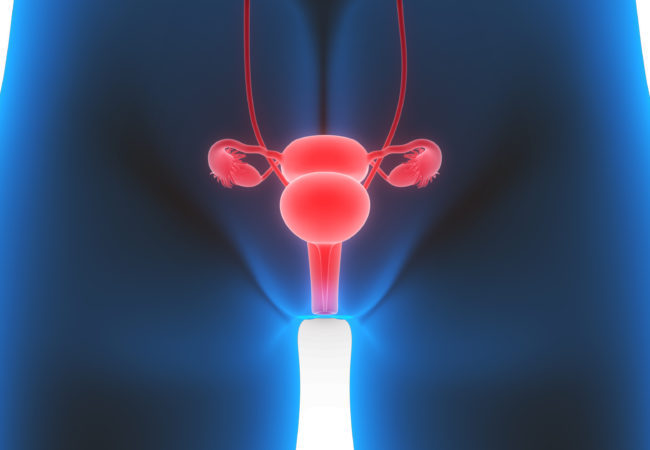What is a Woman to do about BV? New one-day Treatment for Bacterial Vaginosis

By: Holly L. Thacker, MD • Posted on November 28, 2017
What is a woman to do about Bacterial Vaginosis (BV)?
Bacterial Vaginosis (BV) is a common, annoying medical condition in women. It is NOT an infection per se, it is not vaginitis - rather vaginosis. It is related to a change in the bacterial flora of the vagina which allows overgrowth of Gardnerella bacteria that can lead to a fishy, amine odor, and greyish colored vaginal discharge. In essence, there is more “bad” bacteria than “healthy” bacteria.
Normally, a high percentage of vagina bacteria is the healthy lactobacillus, which keeps the vaginal pH low and hostile to other types of bacteria and yeast. Anytime the pH of the vagina is raised, the pH can be raised predisposing a woman to BV. The pH of the vagina can raise due to the following:
- Death of healthy lactobacillus like with antibiotic therapy
- Blood or semen in the vagina
Vaginal Symptoms
If you have new vaginal symptoms, you need to be examined for potential infections:
- Sexually transmitted infections
- Common vaginal infections like yeast/candida yaginitis
- Parasite infection with trichomoniasis
- Vaginal irritation and discharge, which can be due to vaginal atrophy
- Retained items like a tampon
- Allergy and immunological problems like lichen sclerosis
- Vulvar cancer
Potential causes and associations with BV

Some associations of BV are:
- New sexual partner
- Douching (don’t douche as it shoots up bacteria that is in the vagina into the uterus)
- Poor diet
- Low vitamin D
If you are sexually active, and have recurrent BV, you should take the following steps:
- Have your vitamin D levels checked.
- Have your sexual partner wash his penis with plain soap and water before sexual activity.
- Wash any sex toys with warm, soapy water. BV may be transferred from female to female sexual activity.
- Any woman with recurrent BV, may want to wear plain, white cotton underwear as opposed to thong underwear.
Problems associated with BV
Problems associated with BV can include premature delivery or miscarriage if pregnant. If you have BV and are exposed to HIV, you are more likely to get infected with HIV.
Diagnosis
BV is usually easily diagnosed by vaginal smear showing “clue cells’ and/or a vagina DNA quick test in the office can distinguish between BV, candida yeast infections and trichomoniasis.
Treatment
There are several treatments for BV including antibiotics like:
- Clindamycin (used vaginally)
- Metronidazole (oral or vaginally)
- Tinidazole (orally)
Let your physician know if you are pregnant or breastfeeding.
If you are taking any metronidazole or tinidazole you must AVOID ALL ALCOHOL even alcohol-based mouth washes as you may develop severe nausea and vomiting.
New therapy for BV
FDA-approved, one day therapy Solosec (Secnidazole) is approved for non-pregnant women between the ages of 15-44. It is a 2 gram dose of secnidazole that comes in the form of a 2-g packet of granules.
Women need to sprinkle the granules on applesauce, yogurt, or pudding and eat the mixture within 30 minutes without chewing or crunching the granules. Since most current antibiotics for BV must be taken for 5-7 days, this single-dose therapy promises to improve adherence and thus the likelihood of curing BV.
If a woman was to take this therapy while breastfeeding, she would have to cease breastfeeding, that is “pump and dump the milk” for 96 hours.
Be Strong. Be Healthy. Be in Charge!
-Holly L. Thacker MD
Holly L. Thacker, MD, FACP is nationally known for her leadership in women’s health. She is the founder of the Cleveland Clinic Women’s Health Fellowship and is currently the Professor and Director of the Center for Specialized Women’s Health at Cleveland Clinic and Lerner College of Medicine at Case Western Reserve University. Dr. Thacker is also the Executive Director of Speaking of Women’s Health and the author of The Cleveland Clinic Guide to Menopause. Her special interests and areas of research including menopause and related medical problems including osteoporosis, hormone therapy, breast cancer risk assessment, menstrual disorders, female sexual dysfunction and interdisciplinary women’s health.
women's health, bacterial vaginosis, BV, vulva care, vaginal health, treatment for BV, dr. holly l. thacker
Related Articles
- 5 Common Problems ‘Down There’ — and Whether They Are Contagious
- Vulvar Disorders Treatment Guide
- How to Properly Care for Your Vulva
- Taking Care of the Vulva and Vagina
- Preventing Vaginal Infections
